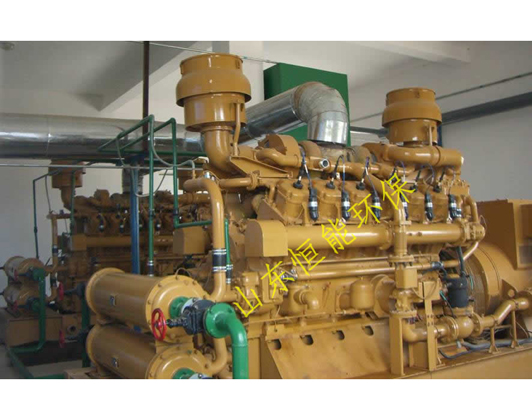生物脫硫技術就是利用微生物或酶催化沼氣中所含的硫化合物(H2S、有機硫),將其所含硫有機物轉化成可回收利用的單質硫,提高沼氣的濃度,減少沼氣燃燒給大氣帶來的污染。隨著國家環保政策和人們環保意識的增強,沼氣脫硫成為了現代沼氣應用的趨勢,而生物脫硫技術與傳統脫硫方式相比,生物脫硫技術更具有其他脫硫工藝無法比擬的優勢:
Biological desulfurization technology is to use microorganisms or enzymes to catalyze sulfur compounds (H2S, organic sulfur) contained in biogas to convert sulfur-containing organic matter into recoverable elemental sulfur, improve the concentration of biogas, and reduce the pollution of the atmosphere caused by biogas combustion. With the enhancement of national environmental protection policy and people's awareness of environmental protection, biogas desulfurization has become the trend of modern biogas application. Compared with traditional desulfurization methods, biodesulfurization technology has more advantages than other desulfurization processes.
1.脫硫效率高。生物脫硫技術運行中硫化氫(H2S)去除率可高達到99.5%以上,并可去除其它有機硫化物,如(COS)氧硫化碳。
1. High desulfurization efficiency. The removal rate of hydrogen sulfide (H2S) can reach over 99.5% in the operation of biological desulfurization technology, and other organic sulfides, such as carbon oxysulfide (COS), can be removed.
2.運行成本低。生物脫硫運行不需要添加昂貴的化學試劑,運行成本是傳統脫硫工藝的十分之一,乃至幾十分之一。
2. Low operating cost. Biological desulfurization operation does not need to add expensive chemical reagents, and the operation cost is one tenth or even one tenth of the traditional desulfurization process.
3.運行非常穩定。生物脫硫生產的單質硫水溶性非常好,不會堵塞管道,而傳統的干法脫硫工藝大的弊端是經常性堵塞。
3. The operation is very stable. The water solubility of sulfur in biological desulfurization production is very good, and the pipeline will not be blocked. The biggest disadvantage of traditional dry desulfurization process is frequent blockage.

4.無二次污染。傳統的濕法脫硫會產生大量的洗滌液廢水,傳統干法脫硫工藝會產生大量的固體廢棄物,都容易產生二次污染,而生物脫硫產生的單質硫通過沉淀的方式直接可回收利用,無二次污染。
4. No secondary pollution. Traditional wet desulfurization will produce a large amount of washing liquid wastewater. Traditional dry desulfurization process will produce a large number of solid wastes, which are prone to secondary pollution. The elemental sulfur produced by biological desulfurization can be directly recycled by precipitation without secondary pollution.
5.勞動強度低。傳統干法脫硫工藝需要經常更換脫硫劑,勞動強度大,而生物脫硫工藝運行穩定,基本不需要設備維護。
5. Low labor intensity. The traditional dry desulfurization process needs to replace desulfurizer frequently, which has high labor intensity, while the biological desulfurization process runs steadily and basically does not need equipment maintenance.
生物脫硫技術運行效率高,廣泛應用于各行各業,越來越成為眾多用戶的脫硫方式。
Biological desulfurization technology has high operational efficiency and is widely used in all walks of life. It has become the preferred desulfurization method for many users.
Today's wonderful content is for you to talk about, more knowledge of biogas desulfurization, please collect our website: http://m.chinaktws.com
